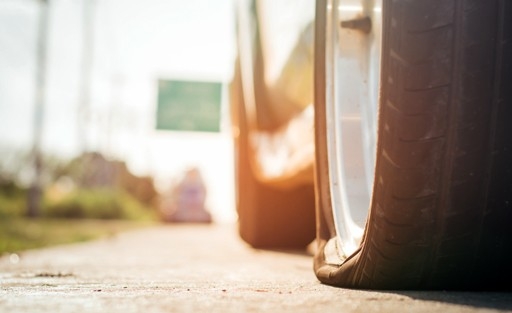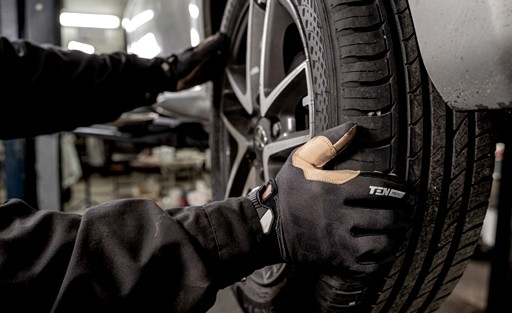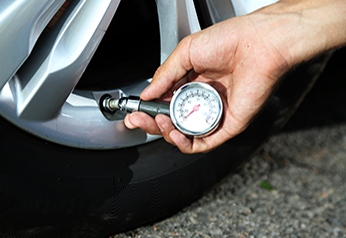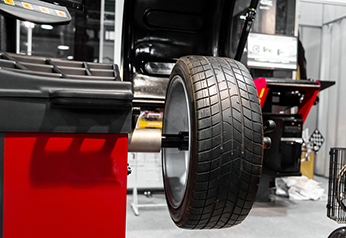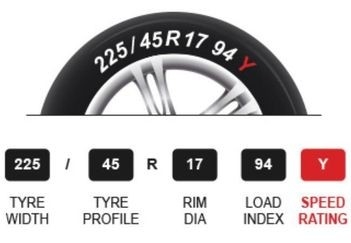
July 14, 2022
Can I Replace Run Flat Tyres With Regular Tyres?
Drivers dread having a flat tyre. You get unresponsive steering, vehicle vibrations, loud noises, and that awful twist in the stomach that comes from worrying about where to park and change tyres safely.
This stressful scenario is what Run-Flat Tyres seek to prevent. With Run-Flat Tyres, you don't have to worry about tyre blowouts and your lack of a spare tyre or tyre-changing skills. Even when punctured, Run-Flat Tyres can let you drive for about 80 kilometres more, giving you enough time to get to a petrol station or tyre shop for help.
Also read Run Flat Tyres—Your Essential Guide
What makes run-flat tyres different from standard tyres?
Though both are inflated with air, Run-Flat Tyres are designed to maintain their shape even when punctured.
How do Run-Flat Tyres work?
Instead of relying on air pressure to remain firm, Runflats have thicker sidewalls that support the weight of your vehicle and passengers even when deflated.
They also come with specially designed beads that cling to the rim, ensuring that the rubber does not disengage from the wheels even with the loss of air.
Tough and heat-resistant rubber reinforces the sidewalls, letting your punctured Run-Flat Tyre safely cover a limited speed and distance of 80 kilometres per hour and 80 kilometres, respectively.
Also read 8 Things You Need to Know About Run-Flat Tyres
What are the Run Flat Symbols per Tyre Brand?
Top tyre manufacturers have embraced the Run-Flat technology, engraving the following terms and acronyms on the sidewalls of their Run-Fat Tyres:
- Bridgestone - RFT or Run Flat Tyre
- Continental - SSR or Self Supporting Run Flat
- Dunlop - SSR or Self Supporting Run Flat
- Goodyear - EMT or Extended Mobility Tyre
- Michelin - ZP or Zero Pressure
- Pirelli - Run Flat tyre
The Pros and Cons of Driving on Run-Flat Tyres
As with all kinds of technology, Run-Flat Tyres has its pros and cons.
The Bright Side
- Protection from accidents due to sudden deflation and tyre blowouts
- No need to carry a spare and tyre repair kit
- Cars with OEM (Original Equipment Manufacturer) Run-Flat Tyres come with A built in Tyre Pressure Monitoring System (TPMS), which alerts you to decreased tyre pressure.
The Downside
- Around 25% more expensive than standard tyres.
- Need an expert tyre fitter to mount them
- Weigh more than standard tyres, resulting in a rougher ride
- Higher rolling resistance = more fuel consumption
Also read 8 Ways You Can Save on Gas With the Right Tyres
Can I Change My Run-Flat Tyres to Regular Tyres?
The short answer to this question is: Yes, you can. Just make sure that the tyre replacements are compatible with your vehicle's specifications on the tyre size, load and speed rating, and inflation. Some drivers choose to replace their Runflats with the more regular tyres to save on cost and boost ride comfort and fuel economy.
Also read Top 8 Causes of a Flat Tyre
But consider these potential risks when you fit standard tyres to a vehicle originally equipped with Runflats:
• Insurance issues
Though some say that replacing your Run-Flat Tyres with regular ones won't affect your insurance policy, we advise that you inform your insurance company about the tyre modification. Ask if this will affect your policy.
• Vehicle Warranty problems
Similar to the above concern, it's best to contact your vehicle manufacturer to confirm that changing to standard tyres is allowed under your vehicle warranty.
• Affected overall performance
Vehicles originally equipped with Run-Flat Tyres work best with RunFlats. These vehicles' suspension and brakes were optimised to run smoothly with Run-Flat tyres and switching to standard tyres will affect its performance. Even the TPMS and other aspects of the vehicle's internal programming may be affected.
• Changing ALL tyres is non-negotiable.
Run-Flat Tyres and regular tyres have different attributes. Mixing and matching them will compromise your performance and safety. Imagine making sharp turns and sudden brakes when half of your tyres are more rigid than the other half. Aside from causing handling issues, this also results in uneven tread wear.
• You are sacrificing ease and safety.
Once you swap your Run-Flat Tyres, say goodbye to the convenience of not having to change tyres in the dark, rain, or in the middle of nowhere. Always be ready with spare and tyre-changing equipment or— if you don't know how to change tyres—the number of a reputable vehicle breakdown service, which can cost plenty.
Also read Top 10 Tyre Shops and Fitting Centres Near You in Sydney
Can I Replace Regular Tyres With Run-Flat Tyres?
The consensus is No.
You can only fit Run-flat tyres on TPMS-equipped vehicles, manufactured from 2008 onwards. If you have an older car OR one that has NO TPMS - then NO, you really can't use run-flat tyres.
Without a TPMS, there's no way to tell that you're driving with a punctured tyre - which is dangerous at high speeds. Technically, you can retrofit the TPMS on the dashboard of your older car, but it can't guarantee 100% accuracy.
Vehicles with OEM Runflats have a unique suspension and brake system and also come with the chassis and wheels that specifically grip Run-Flat Tyres.
Also read Your Guide to Original Equipment Tyres
Now that you know the risks and advantages of switching tyres, it’s time to select the right tyres for your needs. Tyroola offers many options for standard and Run-Flat Tyres, so you’re sure to find the perfect fit for your vehicle and budget.
We give you the lowest prices online while letting you buy tyres in the comfort of your own home.
Check out our guides and blog for more tyre tips and advice!
